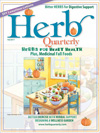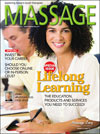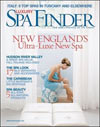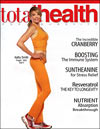A cup of enlightenment
I've always been fond of tea, so much so that it seems fitting that my home is in a building that once housed the largest tea factory in the U.S. Each morning I gather my thoughts over a steaming cup of white or green tea, and throughout the day I make my way through a rainbow of colors and tastes, choosing from an assortment including red rooibos, blueberry, blackberry, violet, ginger, sage, jasmine, peppermint, and of course the occasional black tea. Back when this was a tea factory, old-timers tell me, our floor was where the tasters worked, and sometimes as I enjoy a sip I wonder if their spirits are still here somewhere.
This week I'm finding even more pleasure in my teacup, thanks to a visiting Reiki teacher from Kyoto, Japan: Hyakuten Inamoto, founder of Komyo Reiki. He taught a master class here this past weekend, preceded by an evening talk, and I was fortunate enough to attend both. One point Inamoto-sensei made in both the class and public talk is that a cup of tea can be a shortcut to enlightenment.
He prefers café latte himself, so it isn't just tea: coffee drinkers can find the same experience in their cups, too, he told us.
He began his talk on Friday evening with a Reiki self-healing meditation, leading the group through a brief hands-on self-care session.
"Wow, my headache's gone," said a woman sitting in front of me when the meditation ended. She seemed a bit surprised.
Inamoto first studied Reiki from a Japanese translation of a book written by an American Reiki master, and after that he began looking into the Japanese roots of the practice. He is a lifelong resident of Kyoto, near Mt. Kurama, where 86 years ago, Mikao Usui is said to have found not only enlightenment, but the natural hands-on healing method he called Usui Reiki Ryoho, now known outside simply as Reiki.
As we all should do, he makes a clear distinction between Reiki, the energy, and the system of Reiki. Rei, he said, is "something mysterious, subtle, also sacred." Ki "is like qigong, the same character as in Chinese. So Reiki is the mysterious sacred energy of the universe." The full name of the practice, he said, can be translated as "Usui Reiki healing art" or "Usui Reiki healing system." Contrary to what many practitioners have been taught outside Japan, the word Reiki did not originate with Usui. "It's a common noun in Japan," he said.
It's also not true that Usui "rediscovered" Reiki or found it in ancient sutras, he said.
"It was not the result of his study or research. It was a Godsend. He was given a gift, and he decided to share that gift with as many people as possible," Inamoto said.
"The practice of Reiki is the art of surrender," he said. "It’s so easy to learn Reiki, so simple. All we do is put our hands. But it's so deep.
"For us, it's very difficult to surrender," Inamoto said. "We want to do everything in our power, but when we think that way we are not doing any healing. Our human ego gets involved. Because we are here, alive, there is ego. If we die, no ego. Ego is the proof that we are here. Ego is our good friend, but it can also be a bad companion, or even our enemy. We have to put our ego aside or make our ego smaller and smaller. As we do, our Reiki channel becomes clearer and more open.
Reiki Ryoho has two aspects, he told us: There's the hands-on healing, therapeutic aspect, but "Reiki Ryoho is not only to cure diseases, not only for stress relieving. It has an end: satori, or enlightenment."
A Buddhist monk long before he became a Reiki practitioner, Inamoto named his own branch of the practice Komyo Reiki, komyo meaning enlightenment.
"That is our goal: to reach enlightenment in our daily life. In the hustle and bustle, we need to be calm and peaceable. Our reality is the world of duality: up and down, black and white, with everything two sides of the same coin. We cannot escape this duality as long as we are in this world, but we can transcend." People need time and space to do that, he said.
"But there is one simple way of escaping the world of duality," Inamoto said: "A cup of tea. Or for me, a café latte. A cup of tea means a cup of enlightenment."
That's one of the mottos of Komyo Reiki, he said. The other is: "Go placidly in the midst of praise or blame."
"What did Usui do before he discovered Reiki?" one student asked during the Friday evening lecture.
"He changed his job about 30 times," Inamoto said. "That was very unusual. In Japan, we don’t change jobs. He was a spiritual seeker, always seeking the purpose of life."


































0 Comments:
Post a Comment
<< Home